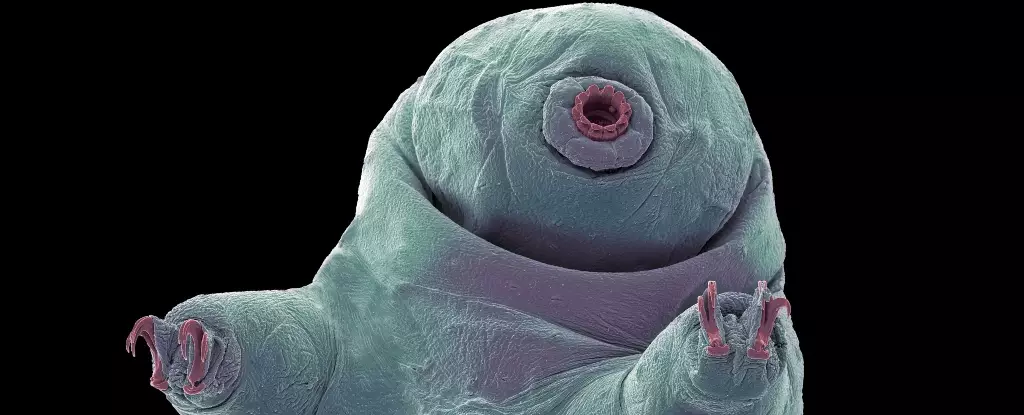The 2025 Lunar and Planetary Science Conference, held in The Woodlands, Texas from March 10 to 14, serves as a significant hub for interdisciplinary dialogue surrounding space exploration. It is a melting pot of bold ideas, cutting-edge research, and prospective missions aimed at unraveling the mysteries of the cosmos. At this year’s conference, an illuminating topic sparked intense interest: the survival mechanisms of life forms in extraterrestrial environments, exemplified by the remarkable tardigrades. This pivotal research underscores both an understanding of life’s resilience and the implications for human exploration of other celestial bodies.
Meet the Tardigrades: Nature’s Extremophiles
Tardigrades, commonly known as “water bears,” have earned a reputation as one of the planet’s most tenacious life forms. Resilient to an astounding array of environmental extremes, these tiny creatures thrive in conditions that would obliterate most life on Earth. Temperatures can plummet to nearly absolute zero or soar beyond boiling point, while pressures found in the deepest ocean trenches would make most life forms falter. They endure extreme desiccation and can withstand intense ionizing radiation, making them ideal subjects for exploration into astrobiology and the potential for life beyond our planet.
Researchers Isadora Arantes, a NASA ambassador, and Geancarlo Zanatta, an Associate Professor from Brazil, have emphasized that the study of tardigrades could yield substantial insights into human survivability in the great unknown of space. Their findings implicate proteins like Dsup (Damage Suppressor) as fundamental players in the remarkable resilience of tardigrades, presenting a model that humanity could emulate for future extraterrestrial missions.
The Power of Dsup: A Proteomic Protector
The Dsup protein is particularly noteworthy due to its protective qualities against DNA damage, specifically under radiation exposure. By forming a effective shield around genetic material, Dsup reduces double-strand breaks that can lead to mutations. Arantes and Zanatta engaged in intricate molecular dynamics simulations using Gromacs software, elucidating how this protein efficiently dissipates harmful radiation and ensures the integrity of genetic blueprints.
In the world of biophysics, this significance extends beyond the wilds of astrobiology—understanding such proteins opens the door to advanced biotechnologies. The implications are profound: we might one day harness the resilience of tardigrades to fortify human cells, creating a new genre of radiation-resistant therapies or engineering crops that could withstand extreme climates, offering potential solutions to climate change challenges we face today.
Exploring Life Beyond Earth: Insights into Extraterrestrial Existence
As the researchers posited, the adaptations observed in tardigrades provide a compelling analog for life forms that may exist on other planetary bodies, such as Mars, Europa, and Titan. These celestial environments echo the extreme conditions that tardigrades can survive. For instance, Mars is notorious for its radiation and intermittent liquid water, while Europa and Titan offer mysterious subsurface oceans that could harbor life in conditions where we wouldn’t normally expect it to flourish. This analogy positions tardigrades as a model not only for microbial survival but as an indicator of potential life in otherworldly conditions.
This astrobiological exploration does not merely entertain fantasies of alien life; it cultivates a framework for actionable research. If tardigrades exhibit such resilience, it begs the question: could similar mechanisms be employed for human exploration of these distant worlds? With further research into the proteins that confer such unique properties, we edge closer to developing the technology that will make sustainable human life on other planets a reality.
The Broader Impact: Extremophiles in Humanity’s Future
The implications of advancing our understanding of extremophiles extend far beyond the confines of space exploration. The relevance of this research is particularly pressing in the context of ongoing environmental challenges on Earth. As climate change alters our planet’s ecosystem, integrating insights gleaned from tardigrade adaptation could revolutionize agriculture and biotechnology, leading to improved crop yields in extreme weather patterns, and enhanced resistance in organisms that will ensure food security.
What is increasingly clear is that the journey of unlocking the secrets of extremophiles is not solely an academic pursuit. The potential applications have the power to shape the trajectory of both space exploration and our resilience on Earth. As Arantes and Zanatta argue, integrated computational and experimental methodologies will be crucial for deciphering the complexities behind extremophile survival—achievements that may soon translate to breakthrough advancements in how we navigate both our world and the expansive cosmos.


Leave a Reply